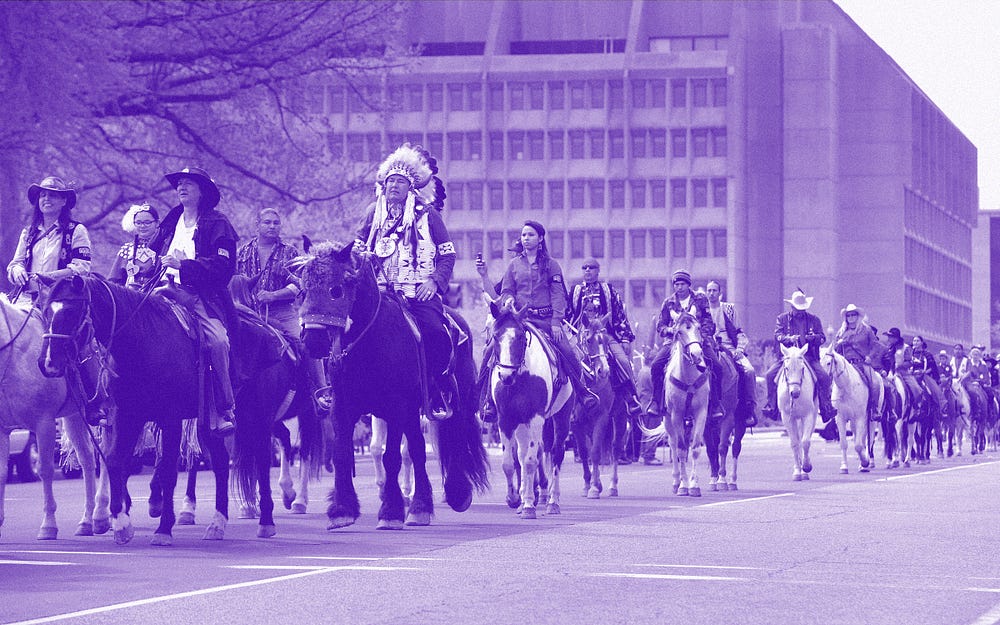Member-only story
The Color of Climate
Keystone XL Is Back, and Threatening Indigenous People All Over Again
Indigenous people all over the world face similar environmental health hazards

This is The Color of Climate, a weekly column from OneZero exploring how climate change and other environmental issues uniquely impact the future of communities of color.
Elders of the Fort Peck Assiniboine Sioux stood in the direct path of the Keystone XL pipeline on April 14 to protest the project, which would carry tar sands oil from Canada to the Gulf Coast. The pipeline, which is under construction, would tear directly through their Montana lands, threatening wildlife and the tribe’s only sources of fresh water.
For elders of the Fort Peck tribe, the threat posed by the Keystone XL brings back haunting memories from over half a century ago.
“I was one of the kids who had to drink contaminated water from the oil boom in the ’60s,” Fort Peck elder Cheyenne Foote told Last Real Indians, a news website that covers Native American affairs. “We finally have clean water and now we see history is ready to repeat itself. I do not want my grandkids to experience the same illness I did from drinking poisonous water.”
The showdown between the region’s indigenous communities and TC Energy, a Canada-based company, has been ongoing for over a decade. President Barack Obama shut down the Keystone XL pipeline project in 2015 after years of protests, but President Donald Trump threw the pipeline a lifeline during his first week in office, signing an order to reverse Obama’s decision. TC Energy began construction in early April, despite the coronavirus pandemic. Late last year, another TC Energy oil pipeline spilled over 380,000 gallons of crude oil into the wetlands of rural North Dakota.
The harm experienced by Foote and the elders in Fort Peck is shared by indigenous people all over the United States and across the world. A 2019 review published in Integrated Environmental Assessment and Management examined all the existing academic research on the negative health impacts of pollution on indigenous communities. It showed that the most common pollution-related health impacts that they experienced stemmed…

